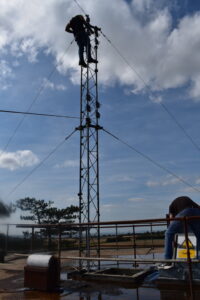Costs of Establishing an LPFM Radio Station

When it comes to LPFM (Low Power FM) radio stations, affordable is far from an accurate description. The process of constructing an LPFM radio station involves multiple significant expenses that prospective broadcasters must carefully consider. From the essential equipment and infrastructure to legal and engineering fees and the day-to-day operational costs, grasping the financial demands is pivotal for a successful venture. In the following piece, we will delve into the various costs associated with establishing a Low Power FM radio station, shedding light on the financial aspects that aspiring broadcasters in the United States should be well-informed about.
I. Engineering and Legal Expenditures
Engineering Study and Fees for FCC Technical Consultants: As part of the application procedure, an engineering study becomes imperative to evaluate the technical feasibility of the proposed station. Engaging FCC Technical Consultants to conduct these essential studies incurs costs, which vary based on the study’s complexity.
Legal and Administrative Costs: Employing legal counsel to review documents, advise on compliance, and ensure adherence to FCC regulations may become necessary. These legal and administrative expenses can fluctuate according to the complexity of the application and the services provided. However, FCC Technical Consultants can often assist in handling issues as they arise.
II. Studio Equipment and Setup
Studio Equipment: Establishing a professional-grade studio entails the acquisition of audio mixing consoles, microphones, headphones, monitors, computers, and software for recording and editing. The cost of studio equipment can vary significantly depending on the desired quality and functionality. A minimum budget of $2,500.00 should be allocated for a basic studio setup.
Automation Systems: LPFM radio stations often rely on automation systems to schedule and manage their programming. These systems enable the use of pre-recorded content, music libraries, and advertisement management. The expenses associated with automation systems depend on the desired features and complexity.
Emergency Alerting System (EAS) Equipment: EAS equipment is an area where some may attempt to economize, but failure to meet federal requirements can lead to substantial penalties. A prudent LPFM applicant should budget no less than $4,000.00 for a compliant EAS system. EAS is federally mandated, so planning to add one later is not a viable option.
Furniture and Acoustic Treatment: Creating a functional and comfortable studio environment incurs expenses related to furniture, acoustic treatment, soundproofing, and equipment racks. The precise costs for these elements depend on the individual design and can vary significantly.
III. Tower and Antenna Installation
Transmission Equipment: Investing in high-quality transmitters, antennas, and related equipment constitutes a significant expense for an LPFM radio station. The costs vary based on factors such as power output, coverage area, and signal quality. Cutting corners with a low-quality transmitter is not advisable.
Tower Construction or Lease: Low Power FM radio stations require a tower for effective radio signal transmission. Broadcasters can choose to construct their own tower or lease space on an existing one, with costs varying based on location, tower height, and permits.
Antenna Installation and Maintenance: Installing the right antenna system is crucial for signal propagation and coverage. Costs encompass the purchase or leasing of the antenna, along with installation expenses. Additionally, ongoing maintenance and periodic inspections may be necessary, incurring additional costs.
IV. Operational Expenses
Staffing: Operating the station necessitates personnel, including DJs, technicians, administrators, and support staff. Costs encompass salaries, benefits, and potential training or hiring expenses.
Programming and Content: Developing engaging and varied programming involves costs such as music licensing fees, syndicated shows, and content creation. This may also include expenses for acquiring news services, talk shows, or other specialized content.
Utilities and Facilities: Running an LPFM station requires ongoing expenses for utilities like electricity, internet connectivity, and phone services. Costs associated with office space or rental facilities, maintenance, and repairs should also be considered.
So far, we’re looking at costs ranging from $8,000.00 to $16,000.00, and there’s more to uncover depending on what you want. You can build the station with the basics or go full steam ahead with the best equipment and additional toys and tools. Good news, you have a generous three-year timeframe to amass the necessary funds, equipment, and complete the station’s construction. This ample time ensures that you can complete these tasks before the construction permit expires. Once you obtain the construction permit, Nexus can provide a more detailed cost evaluation, including specific equipment and particulars. Keep an eye out for upcoming articles that aim to offer deeper insights into the financial aspects and expenses associated with joining the broadcasting community.
